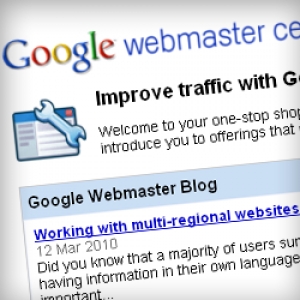
Kristoffer Sandven
Kristoffer Sandven is a photographer, filmmaker and web consultant living in Oslo, Norway. He's the founder and author of JoomlaBlogger.
Joomla blog posts from around the web (6/12)
Here are some interesting Joomla blog posts I found during week 6:
• Talking to my computer
• A tale of a hacked Joomla site
• Customer downloads area currently offline
• CloudApp, Share Screenshots with ease
• Help! My Joomla Site Was Hacked!
• If you are NOT running Joomla 2.5.1 or 1.7.5 read this!
• Forms For Joomla 2.5 Special Offer
• Excellent SEO plugins for Joomla website - Detailed Guideline
• K2Joom and Jiliko.net Partnership
On choosing reliable templates and extensions
The recent upgrade of Joomla to version 2.5 has made me think about the extensions and template providers I use. Whenever I choose a new type of extension for my clients, I take a look at the company's trackrecord. I ask myself some questions to determine if this is a developer I would like to bet my client's money on.
How long have they been around? What does users write online about their products? What do my friends in the Joomla community think about the product? How do they respond to support requests? What is their release cycle? How quickly are they supporting new, major versions of Joomla?
Why should you migrate your Joomla 1.5 site to a newer version?
I recently got the question: "What is the risk of not migrating my Joomla 1.5 site to a newer version?".
That's a really good question, as the task of migrating to Joomla 2.5 can seem like a daunting one. Nonetheless, there are several compelling reasons to migrate your site from 1.5 when it reaches end-of-life in April 2012.
Reduce server load by using a trailing slash in URLs
 A while ago I came across this small tip in an online conversation. It might not be a huge thing, but it can have an impact if you have a site with lots of traffic.
A while ago I came across this small tip in an online conversation. It might not be a huge thing, but it can have an impact if you have a site with lots of traffic.
80% of the end-user response time on a website is spent on the front-end. Most of this time is tied up in downloading all the components in the page: Images, stylesheets, scripts, Flash, etc. Reducing the number of components in turn reduces the number of HTTP requests required to render the page. This is the key to faster pages.
One thing which can increase load-time in a website is the way redirects are handled.
How to remove Skype links from your website
Skype is always looking to create a better user experience for their users. The developers of this excellent communications platform have created a plugin for users to install into their browsers. The plugin creates buttons on phone numbers which makes it easy to call directly, using Skype.
I recently discovered that the Skype plugin actually remove the phone number entirely on some sites.
How to set up the robots.txt file in Joomla
The robots.txt file is a small file located in the root folder of your Joomla site. The file contains instructions to the search engines on what to index and what to leave out.
Some people confuse the robots.txt file with the .htaccess file. The difference is significant. The first one only gives instructions to search engines - and most search engines respect it. The robots.txt file is not used for anything related to security. Nevertheless, it can have an impact on Search Engine Optimization.
The .htaccess file, on the other hand, is used to reconfigure the settings of your Apache server, redirect URLs and other server related tasks. More about that in a later post.
How to do keyword research with Market Samurai
 If you have a Joomla website, you probably want it to be visible in the search engines. And particularly in Google.
If you have a Joomla website, you probably want it to be visible in the search engines. And particularly in Google.
There are many things you can do to get your Joomla site indexed in Google. But how do you make sure that your site is visible on the right keywords and phrases? What I mean is: How do you know that the words you use are the ones that people use when they search for your products or services?
To be successful with Search Engine Optimization (SEO), you need to optimize for the correct words and phrases.
But how do you know what people search for when looking for your products or service? You need to do some research: Keyword research.
The tool I use for keyword research is Market Samurai. It's a great piece of software and available as a free download to try it out.
Research SEO-friendly domains with Domain Samurai
 As you might know, one of my favorite software packages (besides Joomla, of course), is Market Samurai.
As you might know, one of my favorite software packages (besides Joomla, of course), is Market Samurai.
I use Market Samurai daily to do keyword research, find information on SEO competition and track rankings in the search engines. To mention some of the benefits of Market Samurai.
Now, the guys behind Market Samurai have developed and launched a new product. This time it's a tool for finding the best domain to use for your website. And the best thing: It's completely free!
Welcome, Domain Samurai!
Joomla Meta Tags (part 4): Google Webmaster Tools
This is the fourth part of a series of posts on how to work with meta elements in Joomla.
Meta tags are tags, or meta elements, that (mostly) contain information about the website or page which is not shown directly to the user.
In this part I will show you how to use the Google Webmaster Tools to monitor and improve your Joomla meta tags.
Joomla Meta Tags (part 3): sh404SEF
 This is the third part of a series of posts on how to work with meta elements in Joomla.
This is the third part of a series of posts on how to work with meta elements in Joomla.
Meta tags are tags, or meta elements, that (mostly) contain information about the website or page which is not shown directly to the user. In this part I will show you how to use the meta tag functionality in sh404SEF to improve your site SEO.
If you have the SEF (Search Engine Friendly) component sh404SEF installed, the meta tag management is more flexible than with the built-in Joomla solution. You will be able to enter meta tags for any page on your site. This involves for instance that you may enter meta elements for blog and section views, as well as for following pages automatically generated from these views (i.e. page-2, page-3 etc).




